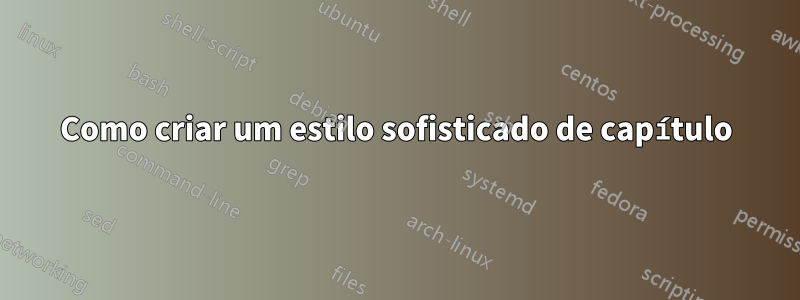
Gostaria de iniciar um novo documento na classe livro que adote um estilo sofisticado de capítulo. A ideia está delineada no desenho abaixo. Basicamente, eu gostaria de ter um pequeno índice dentro do ambiente do capítulo. Também gostaria que a palavra 'Conteúdo' em texto branco fosse escrita verticalmente ao longo da faixa rosa à esquerda. Esta faixa rosa deve se estender verticalmente para baixo até o final do índice. O número do capítulo deve estar no círculo branco (optei por usar 10 em vez de 1 aqui para reforçar que o número do capítulo deve estar centralizado dentro do círculo e nivelado horizontalmente com o título do capítulo). O estilo sofisticado do capítulo deve ocupar a largura do texto e o conteúdo do capítulo deve seguir imediatamente (portanto, não em uma nova página).
Eu realmente apreciaria se alguém pudesse usar suas habilidades em LaTeX para me ajudar a recriar este estilo de capítulo.
Responder1
Isso pode ajudar você a começar, pelo menos em um exemplo mínimo, isso funciona.
\documentclass{report}
\usepackage[explicit]{titlesec}
\usepackage{titletoc}
\usepackage{tikz}
\colorlet{chaptercolorA}{violet}
\colorlet{chaptercolorB}{pink!70}
\newlength\chapterrulewd\setlength\chapterrulewd{1cm}
\newlength\chapterruledist\setlength\chapterruledist{0.25cm}
\newlength\chapterruleover\setlength\chapterruleover{0.25cm}
\newlength\chapterbubblewd\setlength\chapterbubblewd{2pt}
\titleformat\chapter[block]
{\sffamily\startcontents[chapter]}
{}
{0pt}
{%
\begin{tikzpicture}
[
titletext/.style=%
{%
text=chaptercolorA
% to get nice spacing regardless of ascenders or descenders, if you
% change the \chapterrulewd you'll need to adjust these
,text height=.615\chapterrulewd
,text depth=.385\chapterrulewd
}
]
\node
[
text width=\linewidth-\chapterruledist-\chapterrulewd-\chapterruleover
,text=chaptercolorA
,inner sep=0pt
]
(toc)
{%
\printcontents[chapter]{}{1}[\value{secnumdepth}]
{%
% {level}[indent of entry text]{}{numwd}{dotspace}
\dottedcontents{section}[2.3em]{}{2.3em}{4pt}%
\dottedcontents{subsection}[5.5em]{}{3.2em}{4pt}%
% add more formatting levels here if you need them
}%
};
\path
(toc.north west)
++(-\chapterruledist-.5\chapterrulewd,\chapterruledist+\chapterrulewd)
coordinate (tl)
(toc.south west-|tl) coordinate (bl)
(toc.north east|-tl)++(\chapterruleover,0) coordinate (tr)
(tl)++(.5\chapterrulewd,-.5\chapterrulewd) coordinate (bb)
;
\draw[line width=\chapterrulewd,chaptercolorA] (bl) -- (tl) -- (tr);
\node[rotate=90,anchor=east,text=white,inner sep=0]
at (tl|-toc.north)
{Contents};
\node
[
anchor=west, fill=chaptercolorB, line width=0,
inner ysep=0,inner xsep=1cm, titletext
]
at (bb) {#1};
\draw[chaptercolorB,line width=\chapterbubblewd,fill=white]
(bb) circle[radius=0.5*(\chapterrulewd-\chapterbubblewd)];
\node[titletext] at (bb) {\thechapter};
\end{tikzpicture}%
}
% some spacing adjustments if you need them
\titlespacing*\chapter{0pt}{0pt}{0pt}[0pt]
\begin{document}
\setcounter{chapter}{9}
\chapter{One Chapter}
\section{One A}
\section{One B}
\subsection{One B 1}
\subsubsection{One B 1 a}
\subsubsection{One B 1 b}
\subsection{One B 2}
intriguing text
\end{document}




